Your cart is currently empty!
Month: July 2024
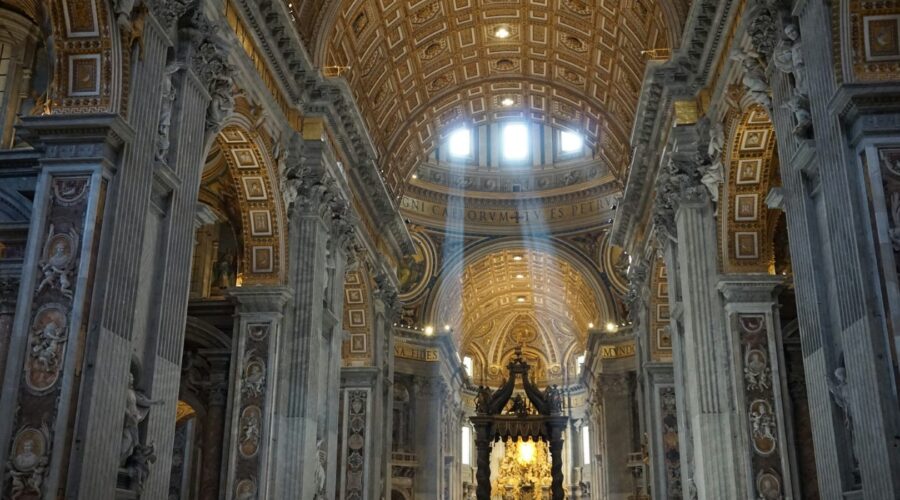
Religious Denomination: A Comprehensive Guide to Understanding Different Faith Traditions
What is a Religious Denomination?
A religious denomination is a distinct and organized branch of a religion that shares a common set of beliefs, practices, and traditions. Denominations may arise from differences in interpretations of religious texts, differing views on doctrine or practice, or historical splits within a religious community.
Denominations often establish their own organizational structures, leadership, and governance systems. They may have their own governing bodies, clergy, and places of worship.
Factors Influencing Denominational Formation
The formation of denominations can be influenced by various factors, including:
- Theological differences: Disagreements over religious beliefs, doctrines, and interpretations of scripture.
- Cultural and historical factors: Differences in cultural context, geographical location, and historical events.
- Leadership and authority: Disputes over leadership roles, authority, and decision-making processes.
- Social and political issues: Disagreements over the role of religion in society, political issues, or ethical concerns.
Types of Religious Denominations
There are a wide variety of religious denominations within major world religions, including:
Christianity
- Catholicism
- Orthodox Christianity
- Protestantism
- Anglican Communion
- Baptist
- Methodist
- Presbyterian
Islam
- Sunni
- Shia
- Sufism
Judaism
- Orthodox Judaism
- Conservative Judaism
- Reform Judaism
Buddhism
- Theravada Buddhism
- Mahayana Buddhism
- Vajrayana Buddhism
Hinduism
- Vaishnavism
- Shaivism
- Shaktism
Importance of Religious Denominations
Religious denominations play several important roles in society:
- Preserving and interpreting religious traditions: Denominations help maintain and pass down religious beliefs, practices, and rituals.
- Providing spiritual and moral guidance: Denominations offer spiritual guidance, support, and ethical guidelines to their members.
- Facilitating religious practices: Denominations provide places of worship, organize religious services, and facilitate religious rituals.
- Promoting social and community engagement: Denominations often engage in social welfare, outreach programs, and community activities.
- Fostering interfaith dialogue: Denominations can participate in interfaith dialogue and promote understanding among different religious traditions.
Challenges Faced by Religious Denominations
Religious denominations may face various challenges, such as:
- Internal conflicts and divisions: Disagreements over doctrine, leadership, or social issues can lead to internal conflicts and schisms.
- Secularization and religious decline: Declining religious affiliation and secularization can pose challenges to the growth and influence of denominations.
- Balancing tradition and modernization: Denominations may face the challenge of balancing traditional beliefs and practices with the evolving needs and perspectives of modern society.
- Interfaith friction and persecution: Denominations may encounter tension or persecution from other religious groups or secular authorities.
- Financial and organizational challenges: Denominations may face financial and organizational challenges, such as sustaining their institutions and supporting their clergy.
Conclusion
Religious denominations are distinct branches of religion that share common beliefs, practices, and traditions. They play a significant role in preserving and interpreting religious traditions, providing spiritual guidance, facilitating religious practices, and promoting social engagement. Denominations also face challenges related to internal conflicts, secularization, balancing tradition and modernization, and interfaith dynamics.
Understanding the nature and role of religious denominations is essential for appreciating the diversity and complexity of religious beliefs and practices in the world.
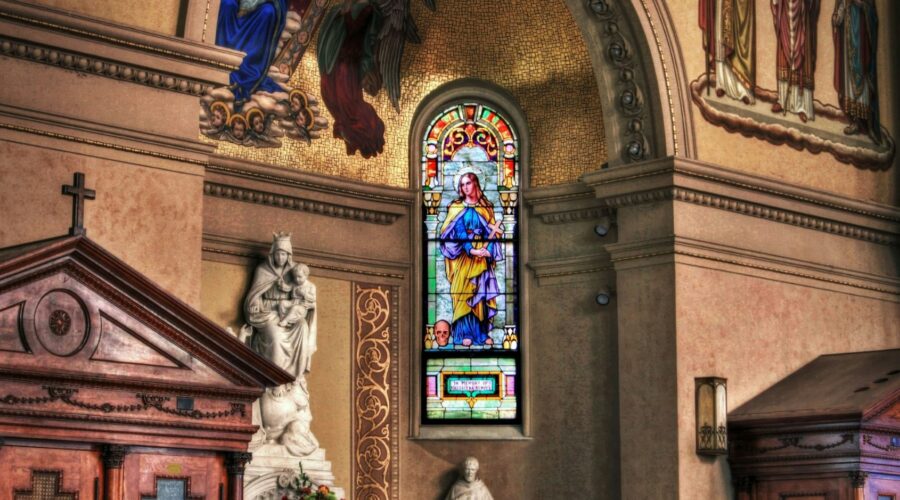
Explore a Historical Landmark: Second Presbyterian Church
A Profound History
Established in 1741, Second Presbyterian Church (SPC) stands as a testament to enduring faith and architectural grandeur in the heart of Philadelphia, Pennsylvania. This historic congregation has played a pivotal role in shaping the city’s religious landscape and preserving its cultural legacy.
Architectural Marvel
SPC boasts an exquisite architectural design that seamlessly blends Gothic Revival and Victorian elements. Its prominent facade features a massive bell tower, ornate stained glass windows, and intricate stone carvings. The interior is equally captivating, with a soaring vaulted ceiling, an impressive pipe organ, and a rich tapestry of religious artwork.
Gothic Revival Style
- Pointed arches
- Stained glass windows
- Tracery
Victorian Influence
- Intricate stonework
- High gables
- Polychromatic color schemes
Church Services and Community Outreach
SPC continues to be an active and vibrant congregation today. It offers a variety of worship services, including traditional, contemporary, and Spanish-language services. The church also hosts a wide range of community outreach programs, such as:
- Soup kitchens
- Food pantries
- Tutoring programs
- Support groups
Tours and Special Events
To appreciate the beauty and historical significance of SPC, visitors can take guided tours led by knowledgeable docents. The church also hosts special events throughout the year, including concerts, lectures, and exhibitions. These events provide an opportunity for the public to connect with the church’s heritage and mission.
Historical Significance
SPC has played a significant role in American history and culture:
- Revolutionary War: The church served as a hospital for wounded soldiers during the Battle of Germantown.
- Abolitionist movement: Prominent abolitionists such as Frederick Douglass and Harriet Beecher Stowe preached at SPC.
- Civil Rights movement: SPC supported the Civil Rights Act of 1964 and provided a safe haven for the Freedom Riders.
Notable Pastors
SPC has been led by several distinguished pastors throughout its history, including:
- Rev. John Witherspoon: A signer of the Declaration of Independence and President of the College of New Jersey (now Princeton University)
- Rev. Albert Barnes: A renowned abolitionist and author
- Rev. George Craig Stewart: A leader in the Social Gospel movement
Visitor Information
Second Presbyterian Church is located at 215 North 20th Street in Philadelphia, Pennsylvania. Guided tours are available Tuesday through Saturday, and worship services are held on Sundays.
Address: 215 North 20th Street, Philadelphia, PA Phone: (215) 563-1421 Website: https://www.secondpresbyterian.org/ Conclusion
Second Presbyterian Church stands as a towering symbol of faith, architectural beauty, and historical significance. Its enduring legacy continues to inspire generations of Philadelphians and visitors alike. Whether you are a history buff, an architecture enthusiast, or a seeker of spiritual guidance, SPC offers a rich and rewarding experience that will leave an unforgettable mark on your memory.
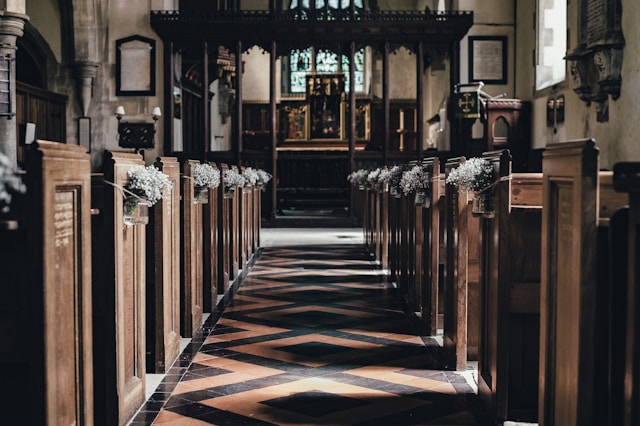
Unlocking the Power of the Holy Name of Jesus: A Comprehensive Guide
Introduction
The Holy Name of Jesus has been revered throughout history for its profound power and significance. It is a symbol of hope, healing, and redemption, transcending religious boundaries to touch the lives of countless individuals. This comprehensive guide delves into the multifaceted aspects of the Holy Name of Jesus, exploring its origins, significance, devotional practices, and transformative effects.
Origins and Biblical Basis
The Holy Name of Jesus originates from the Greek word “Iēsous,” which is the equivalent of the Hebrew name “Yeshua.” In the Gospels, Jesus’s name is first bestowed upon him by the angel Gabriel, who proclaims that he will be “great” and “called the Son of the Most High” (Luke 1:31-32). The name “Jesus” holds immense theological significance, symbolizing his human nature, divine mission, and role as the Savior of mankind.
The Power of the Name
Throughout the New Testament, the Holy Name of Jesus is associated with extraordinary power and authority. In Acts 3:6, Peter declares, “In the name of Jesus Christ of Nazareth, walk.” As he spoke these words, a lame man is miraculously healed, demonstrating the potent effects of Jesus’s name. Similarly, in Acts 4:12, Peter proclaims that there is “no other name under heaven given among men by which we must be saved.”
Historical Significance
The veneration of the Holy Name of Jesus has been a cornerstone of Christian tradition for centuries. In the early Church, the name was invoked for protection against evil spirits and as a source of comfort during times of persecution. As Christianity spread throughout Europe, the Holy Name became deeply ingrained in culture, with churches, monasteries, and pilgrimages dedicated to its honor.
The Feast of the Holy Name of Jesus
In 1568, Pope Pius V established the Feast of the Holy Name of Jesus, which is celebrated annually on January 2. This feast commemorates the circumcision of Jesus and serves as a reminder of the power and significance of his name. The feast is celebrated with special liturgies, processions, and prayers, honoring the sacredness and majesty of Jesus’s identity.
Devotional Practices
The Holy Name of Jesus has inspired a wide range of devotional practices throughout history. These practices aim to foster a deeper connection with Jesus and to experience the transformative power of his name.
The Holy Name Rosary
The Holy Name Rosary is a powerful prayer that consists of 33 beads, symbolizing the 33 years of Jesus’s life on earth. Each bead is dedicated to a different aspect of Jesus’s name, such as his divinity, humanity, and his role as Savior. By reciting the rosary, devotees seek the intercession of Jesus and strive to cultivate a closer relationship with him.
The Litany of the Holy Name of Jesus
The Litany of the Holy Name of Jesus is a beautiful and ancient prayer that consists of a series of invocations and responses. Each invocation focuses on a different attribute or title of Jesus, such as “Jesus, Son of the Living God,” “Jesus, our Advocate,” or “Jesus, our Redeemer.” By praying the litany, devotees express their adoration, gratitude, and petitions to Jesus.
Spiritual Exercises
Spiritual exercises, such as meditation and contemplation, can deepen one’s understanding of the Holy Name of Jesus. By dwelling on the meaning and significance of Jesus’s name, devotees can cultivate a profound sense of intimacy with him and experience the transforming power of his presence.
Transformative Effects
The Holy Name of Jesus has a profound transformative effect on those who embrace it with faith and devotion. Its power can:
- Heal wounds and bring comfort: Invoking the Holy Name of Jesus can bring solace and healing to those suffering from physical, emotional, or spiritual wounds.
- Drive out evil spirits: The name of Jesus is a powerful weapon against the forces of darkness. By invoking it, believers can protect themselves from temptations, attacks, and evil influences.
- Increase grace and holiness: Praying to Jesus through his Holy Name can strengthen one’s faith, increase their love for God, and promote a deeper understanding of the divine.
- Guide and protect on life’s journey: The Holy Name of Jesus serves as a beacon of hope and guidance, helping devotees navigate the challenges and obstacles of life with faith and courage.
Conclusion
The Holy Name of Jesus is a sacred and powerful symbol that has inspired and empowered countless individuals throughout history. Its origins, biblical basis, historical significance, devotional practices, and transformative effects demonstrate the profound impact that Jesus’s name has on those who believe in him. By embracing the Holy Name of Jesus with faith and devotion, we can experience the healing power of his love, the protection of his grace, and the transforming presence of his Spirit in our lives.
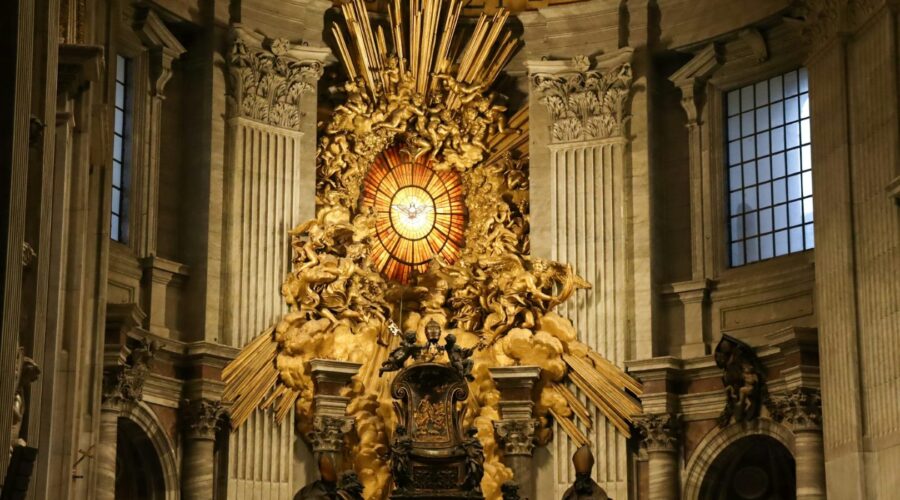
Discover the Rich History and Significance of Our Lady of Guadalupe Catholic Church
Our Lady of Guadalupe Catholic Church, nestled in the heart of [City Name], has served as a beacon of faith and a spiritual sanctuary for countless Catholics for over [Number] years. This iconic church holds immense historical and religious significance, attracting pilgrims and visitors from far and wide.
The Apparition of Our Lady
The church’s origins can be traced back to the miraculous apparition of Our Lady of Guadalupe to Juan Diego Cuauhtlatoatzin, an indigenous peasant, in 1531. According to tradition, Mary appeared to Juan Diego on Tepeyac Hill, near Mexico City, and asked him to build a church in her honor. When Juan Diego relayed the message to the bishop, he was asked for proof. The bishop requested that Juan Diego return with a sign from the Virgin. Upon returning to Tepeyac Hill, Juan Diego witnessed roses blooming out of season and collected them in his cloak.
When Juan Diego presented the cloak to the bishop, the image of Our Lady of Guadalupe was miraculously imprinted on the fabric. The image, depicting Mary as a pregnant woman with dark skin and indigenous features, became a symbol of hope and unity for the indigenous population of Mexico.
The Construction of the Church
Following the apparition, the construction of the first church on Tepeyac Hill began in 1533. The Old Basilica, completed in 1709, served as the principal shrine to Our Lady of Guadalupe until 1976. Due to its structural instability and the increasing number of pilgrims, the New Basilica was built adjacent to the Old Basilica and inaugurated in 1976.
The New Basilica
The New Basilica of Our Lady of Guadalupe is a magnificent architectural masterpiece, designed by Mexican architect Pedro Ramírez Vázquez. The vast interior can accommodate up to 10,000 worshipers and features stunning stained glass windows and intricate mosaics that depict the history of the apparition and the life of Mary.
- Capacity: 10,000 worshipers
- Height: 68 meters (223 feet)
- Diameter of the dome: 81 meters (266 feet)
- Stained glass windows: Over 100 windows, depicting scenes from the Bible and the history of Our Lady of Guadalupe
Pilgrimages and Devotion
Our Lady of Guadalupe Catholic Church is a major pilgrimage destination, attracting over 20 million visitors each year. Pilgrims come from all over Mexico and the world to pay homage to the Virgin and pray for her intercession. The feast day of Our Lady of Guadalupe, celebrated on December 12th, is one of the most important religious holidays in Mexico.
The church offers a variety of services for pilgrims, including Masses in several languages, guided tours, and confessions. There are also numerous shops and restaurants in the surrounding area where pilgrims can purchase religious items and souvenirs.
Museum and Archives
In addition to the basilica, there is also a museum and archives on the premises. The museum houses a collection of artifacts and documents related to the apparition and the history of the church. The archives contain over 100,000 documents, including the original account of Juan Diego’s encounter with the Virgin.
Conclusion
Our Lady of Guadalupe Catholic Church is a living testament to the enduring faith and devotion of the Catholic people. From its humble beginnings on Tepeyac Hill to its status as one of the world’s most important pilgrimage destinations, the church has played a vital role in the history and culture of Mexico and beyond. Whether you are a pilgrim seeking spiritual renewal or a visitor interested in history and architecture, Our Lady of Guadalupe Catholic Church is a must-visit destination that will leave a lasting impression.
Tips for Visitors
- If possible, plan your visit during the week to avoid large crowds.
- Wear comfortable shoes as you will be doing a lot of walking.
- Be respectful of the religious nature of the site.
- Take your time to explore the basilica, museum, and archives.
- Bring a camera to capture the stunning architecture and artwork.
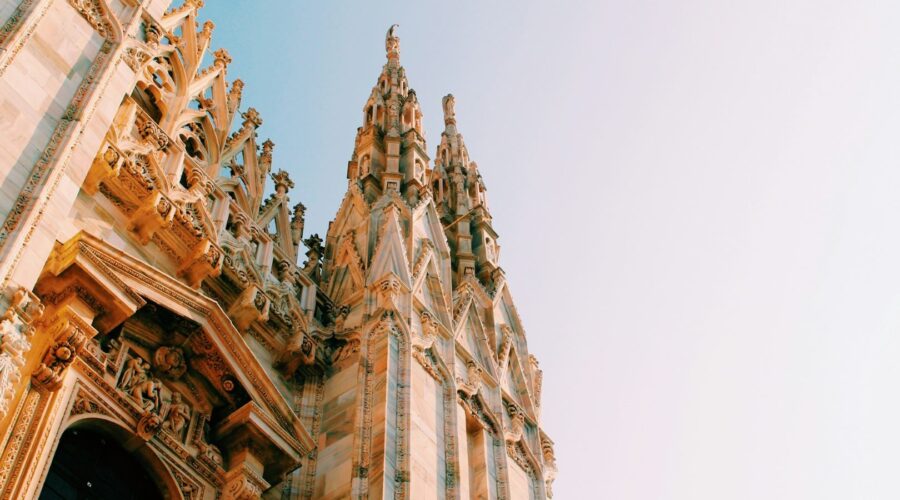
St. Boniface: The Apostle of Germany and Patron Saint of Mariners
Early Life and Education
Boniface was born Winfrid around 675 AD in Crediton, England. He received a thorough education at the Benedictine monastery of Exeter, where he studied theology, grammar, and rhetoric. His thirst for knowledge led him to pursue further studies at the abbey of Nursling, where he excelled in his studies and was ordained a priest in 710 AD.
Missionary Work in Germany
In 719 AD, Boniface heeded the call to spread Christianity among the pagan tribes of Germany. With the blessing of Pope Gregory II, he embarked on a dangerous and arduous mission. He traveled through Thuringia, Hesse, and Bavaria, preaching the Gospel and baptizing thousands.
Felling the Sacred Oak of Thor
One of Boniface’s most famous acts was the felling of the sacred oak of Thor at Geismar, near Kassel. This sacred tree was the centerpiece of pagan worship in the region. By cutting it down, Boniface symbolized the triumph of Christianity over paganism.
Establishment of Dioceses and Monasteries
As his missionary work progressed, Boniface founded several dioceses, including those of Mainz, Würzburg, and Paderborn. He also established monasteries and churches throughout Germany, providing centers for worship, education, and social services.
Archbishop and Martyr
In 732 AD, Boniface was appointed archbishop of Mainz by Pope Gregory III. As archbishop, he continued his missionary work and promoted reforms within the Frankish Church. In 754 AD, while on a confirmation tour in Friesland, Boniface and his companions were attacked by a mob of angry pagans. They were martyred on June 5, 754 AD.
Patron Saint of Mariners
Boniface is also known as the patron saint of mariners. This connection stems from a legend that during a storm, he calmed the waters by invoking the Trinity. Sailors and fishermen often pray to St. Boniface for protection and safe passage.
Legacy and Impact
St. Boniface’s legacy is immense. He is considered the “Apostle of Germany” for his role in converting the pagan tribes to Christianity. His missionary work paved the way for the establishment of the Christian church in Germany and laid the foundation for the development of Western civilization in central Europe.
Churches and Relics
- Mainz Cathedral houses the tomb of St. Boniface.
- Fuldatal Monastery, near Kassel, is built on the site of Boniface’s martyrdom.
- Fulda Cathedral contains relics of St. Boniface.
- Numerous churches throughout Germany are dedicated to St. Boniface.
Feast Day and Iconography
St. Boniface’s feast day is celebrated on June 5th. He is often depicted in art as a bishop holding a sword or a book, symbolizing his role as a missionary and martyr.
Conclusion
St. Boniface was a courageous and dedicated missionary who played a pivotal role in the spread of Christianity in Germany. His legacy continues to inspire and guide Christians today. As the patron saint of mariners, he is revered by sailors and fishermen who seek his protection on the open seas.
Table of Key Dates in St. Boniface’s Life Date Event c. 675 Birth in Crediton, England 710 Ordination as a priest 719 Embarks on missionary work in Germany 723 Fells the sacred oak of Thor at Geismar 732 Appointed archbishop of Mainz 754 Martyrdom in Friesland Visit the Catholic Online website for more information on St. Boniface.
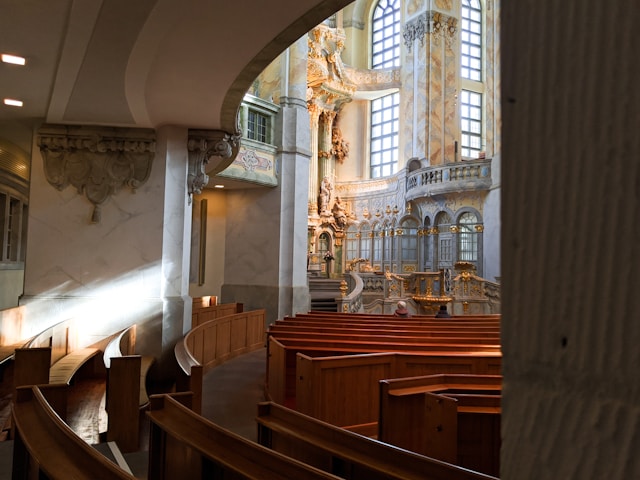
Discover the Historic and Architectural Marvel: St. Pius X Church
A Historical Legacy
Nestled in the bustling heart of Milwaukee, Wisconsin, St. Pius X Church stands as a testament to faith, resilience, and architectural brilliance. Founded in 1929 by a Polish immigrant community, the church has witnessed countless events, touched the lives of generations, and left an indelible mark on the city’s landscape.
Origins and Construction
The humble beginnings of St. Pius X Church can be traced to a small group of Polish immigrants who gathered in a modest storefront for religious services. As their numbers grew, the need for a dedicated church became apparent. In 1929, construction began on a grand new building designed by renowned architect Eugene Liebold.
Architectural Masterpiece
St. Pius X Church is a masterpiece of Gothic Revival architecture, incorporating elements of traditional Polish craftsmanship.
Exterior Features
The exterior of the church captivates with its towering spires, intricate stone carvings, and stained glass windows. The massive façade features a central rose window, flanked by two smaller spires, and topped by a towering steeple. The walls are adorned with intricate carvings depicting biblical scenes and Polish folk motifs.
Interior Splendor
Stepping inside the church, one is awestruck by the sheer grandeur and delicate beauty. The vaulted ceilings soar high above, adorned with vibrant murals and intricate plasterwork. The stained glass windows flood the interior with colorful light, creating an ethereal atmosphere. The focal point of the sanctuary is the elaborate high altar, intricately carved with religious figures and symbols.
Beyond the Bricks and Mortar
St. Pius X Church is more than just a magnificent architectural wonder; it is a thriving spiritual community.
Congregational Life
The parish is home to a diverse congregation that actively participates in a wide range of religious services, educational programs, and social events. Mass is celebrated regularly in English, Polish, and Spanish, catering to the diverse needs of the local community.
Community Outreach
St. Pius X Church is deeply committed to serving the broader community. It operates a soup kitchen, provides shelter for the homeless, and offers support services to those in need. The church also plays an important role in local education, sponsoring a parochial school and providing scholarships to deserving students.
Visitor Information
St. Pius X Church is open to the public for guided tours and self-guided exploration.
Tour Information
Guided tours of the church are available by appointment. Contact the parish office to arrange a tour.
Self-Guided Visits
Visitors are welcome to explore the church independently during regular business hours. Respectful behavior is expected during religious services.
Additional Resources
* [St. Pius X Church Official Website](https://www.stpiusmilwaukee.org/)
* [Archdiocese of Milwaukee](https://www.archmil.org/)
* [Historic Milwaukee](https://www.historicmilwaukee.org/)Conclusion
St. Pius X Church is a true gem, a captivating blend of architectural beauty, historical significance, and unwavering faith. Its towering spires and intricate carvings are a testament to the artistry and devotion of its creators. As a vibrant spiritual community and a beacon of hope, the church continues to play a vital role in the lives of its congregation and the broader Milwaukee community.
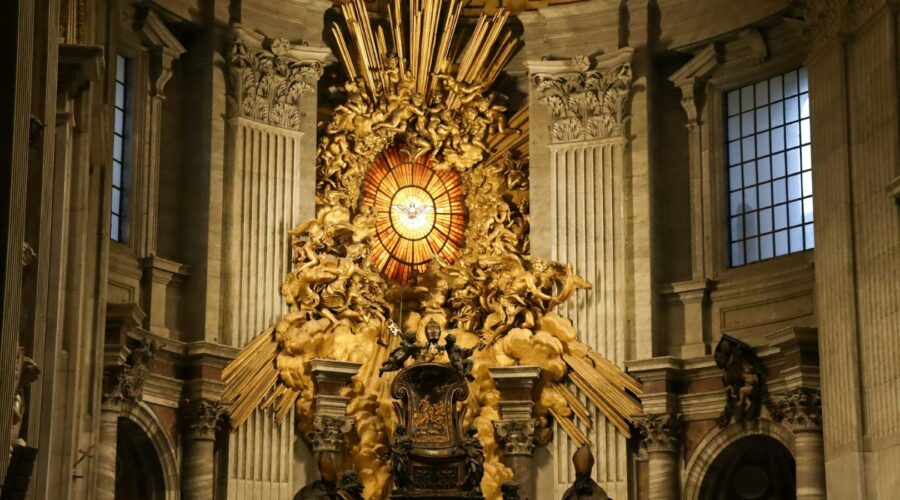
The Liturgy of the Word: A Guide to Understanding and Participating
Introduction
The Liturgy of the Word is an integral part of the Catholic Mass, serving as the proclamation and meditation on God’s Word through readings from Scripture. It nourishes our faith, deepens our understanding of the Gospel, and prepares us for the Liturgy of the Eucharist.
Purpose and Significance
- Proclaims God’s Word: Presents the living and active Word of God, inviting us to listen attentively.
- Nourishes Faith: Nourishes our spiritual growth by feeding us with the Word of God.
- Interprets the Gospel: Through the homily, the priest or deacon provides insights that help us apply God’s Word to our lives.
- Prepares for the Eucharist: Sets the stage for the Liturgy of the Eucharist, where we receive the Body and Blood of Christ.
Structure
The Liturgy of the Word consists of several elements:
First Reading
- Usually from the Old Testament
- Prophecies, narratives, or historical accounts
- Helps us understand God’s plan of salvation
Responsorial Psalm
- Drawn from the Psalms
- Reflects on the message of the First Reading
- Explores our personal response to God’s Word
Second Reading
- From the New Testament (Acts, Epistles, or Revelation)
- Apostles’ teachings and reflections on Christ
- Helps us understand how to live the Gospel
Gospel Acclamation
- Sung or recited before the proclamation of the Gospel
- Expresses our joy and reverence
- Text varies according to the liturgical season
Gospel Reading
- Account of Jesus’ life, teachings, and actions
- Gospel writer’s unique perspective and interpretation
- Central and most important part of the Liturgy of the Word
Homily
- Commentary on the readings
- Given by the priest or deacon
- Breaks open the Word of God and applies it to our lives
Participation
- Listen attentively: Pay focused attention to the readings and homily.
- Pray with the Psalms: Sing or recite the Responsorial Psalm with devotion.
- Stand and Sit Respectfuly: Rise for the Gospel and sit for the other readings.
- Reflect on the Word: Take time after Mass to meditate on the readings and their impact on your life.
- Live the Gospel: Allow the Word of God to shape your thoughts, words, and actions.
Tips for Effective Participation
- Prepare by reading the readings beforehand.
- Bring a Bible or prayer book to follow along.
- Sit comfortably and eliminate distractions.
- Pray for the Holy Spirit’s guidance.
- Discuss the readings and homily with others after Mass.
Benefits
- Deepens our faith: Strengthens our understanding of God and his plan for us.
- Provides guidance: Helps us navigate life’s challenges and discern God’s will.
- Brings comfort and peace: Soothes troubled hearts and heals wounded souls.
- Forms community: Unifies us as a people listening to and living God’s Word together.
Conclusion
The Liturgy of the Word is a transformative experience that nourishes our spiritual lives, deepens our understanding of the Gospel, and prepares us for the Eucharist. By participating attentively and prayerfully, we encounter the living Word of God and allow it to shape our hearts and lives.
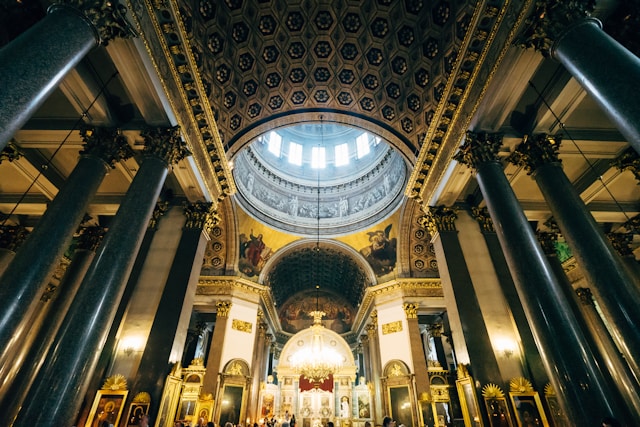
Unlocking the Mystical Union: Unveiling the Bride of Christ
In the tapestry of Christian thought, the imagery of the Bride of Christ has woven itself as a profound and enduring metaphor, symbolizing the unbreakable bond between Jesus Christ and His followers. This multifaceted concept, deeply rooted in Scripture and tradition, invites us on a celestial journey to explore its spiritual significance and transformative power.
The Scriptural Foundation: A Covenant of Love
The biblical narrative provides the cornerstone for understanding the Bride of Christ. In the Old Testament, God’s relationship with His people Israel is often depicted in terms of a marital covenant (e.g., Isaiah 54:5). The prophet Hosea uses the metaphor of a betrothal to describe God’s unyielding love and the people’s response of faithfulness (Hosea 2:19-20).
In the New Testament, this imagery finds its ultimate fulfillment in the union between Christ and His church. The apostle Paul, in his letter to the Ephesians, refers to the church as “the bride of Christ” (Ephesians 5:25-27). This metaphor highlights the intimacy, love, and mutual commitment that characterize this covenantal relationship.
The Metaphorical Significance
The Bride of Christ metaphor extends beyond a mere analogy; it is a profound symbol that reveals the nature of God’s love and the believer’s response.
A. Intimate Fellowship:
The marriage bond signifies the close and personal relationship between Christ and His followers. As the bridegroom and bride share an unbreakable union, so too do believers experience an intimacy with Christ that transcends the boundaries of time and space.
B. Purity and Holiness:
The bride is portrayed as pure and spotless (Revelation 19:7-8), reflecting the believer’s desire to live a life of holiness and obedience. The goal of every follower of Christ is to become more Christ-like, embodying His virtues and living in harmony with His teachings.
C. Spiritual Transformation:
The process of becoming the Bride of Christ involves a transformative journey. As believers grow in their faith and commitment, they undergo a gradual purification and sanctification, conforming more fully to the image of Christ.
Preparing for the Bridegroom’s Return
The Bride of Christ imagery serves as a reminder that God’s ultimate plan is to gather His people together in a celestial union with Himself. This eschatological hope motivates believers to live in anticipation of Christ’s second coming and to prepare themselves for the culmination of their spiritual journey.
Preparation for the Bridegroom’s return involves:
- Faithful discipleship and obedience to God’s commandments
- Maintaining a pure and blameless life
- Striving for personal and collective holiness
- Living in unity and love with fellow believers
Practical Implications for Believers
The Bride of Christ metaphor has profound implications for the daily lives of believers:
A. Spiritual Intimacy:
As the Bride of Christ, believers are called to cultivate a deep and intimate relationship with Him. This involves prayer, meditation, worship, and intentional time spent in His presence.
B. Holy Living:
The desire to be a faithful and pure Bride should motivate believers to live according to God’s standards of righteousness. This includes avoiding sin, pursuing purity, and being a positive example to others.
C. Mission and Evangelism:
As the Bride of Christ, believers are entrusted with the mission of sharing the Gospel and bringing others into the saving relationship with God. They are called to love their neighbors, serve their communities, and proclaim the message of salvation to the world.
Conclusion
The Bride of Christ metaphor is a multifaceted and transformative concept that reveals the depth of God’s love for His people and the intimate relationship He desires with them. As believers, we are called to live as a pure and holy Bride, preparing ourselves for the glorious day when we will be united with our Bridegroom in an eternal and unbreakable bond of love.
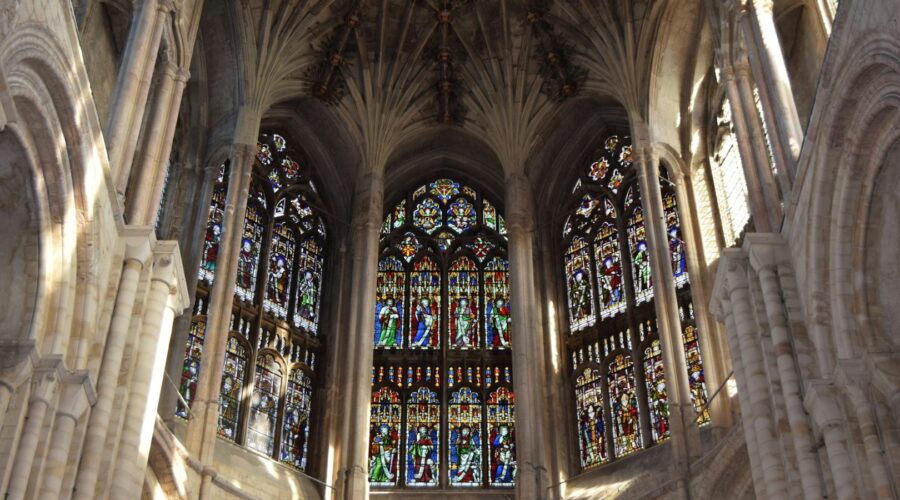
Laodicea: A Thriving Ancient City with Enduring Historical Significance
Introduction
Laodicea, one of the most prominent ancient cities in Asia Minor, flourished as a hub of commerce and culture during the Hellenistic, Roman, and Byzantine periods. Its strategic location and thriving economy made it a significant center in the ancient world and a testament to the region’s rich cultural heritage. Today, the ruins of Laodicea serve as a captivating destination for explorers and history enthusiasts.
Historical Background
Origins and Foundation
Laodicea was founded in the 3rd century BCE by Antiochus II Theos, the Seleucid king of Syria, and named after his wife, Laodice. It was initially established as a military outpost to control the Lycus River valley, a vital trade route between the Aegean Sea and the interior of Asia Minor.
Prosperity under Roman Rule
In the 1st century BCE, Laodicea became part of the Roman Empire. Under Roman rule, the city flourished, emerging as a major commercial center. Its textile industry, particularly wool production, gained renowned throughout the empire. Laodicea also became a significant center for banking and finance, attracting merchants and traders from across the Roman world.
Architecture and Urban Planning
Public Buildings and Infrastructure
Laodicea boasted an array of impressive public buildings and infrastructure. The most prominent of these was the Stadium, which could accommodate up to 20,000 spectators and hosted sporting events and festivals. Other notable structures included the Theater, the Odeon, and the Nymphaeum, a monumental fountain that supplied water to the city.
Thermal Baths and Aqueducts
Laodicea was renowned for its extensive thermal baths, which utilized natural hot springs. The Baths of Hierapolis, located just north of the city, were particularly opulent, featuring luxurious bathing facilities, pools, and gardens. Laodicea’s water supply was ensured by a series of aqueducts that brought water from distant sources, some located over 20 kilometers away.
Commerce and Industry
Textile Production
Laodicea’s textile industry was the cornerstone of its economy. The city produced a wide range of textiles, including high-quality wool, which was exported throughout the Roman Empire. The city’s textile guilds played a vital role in organizing production and ensuring the quality of their products.
Banking and Finance
Laodicea was also a major financial center. Its bankers and merchants facilitated trade and commerce across the region. The city’s wealth and economic power attracted a significant Jewish population, who played a prominent role in finance and banking.
Culture and Religion
Hellenistic Influences
Laodicea’s cultural heritage reflected its Hellenistic origins. The city adopted Greek language, religion, and customs. Its architecture, art, and literature were heavily influenced by Greek styles and traditions.
Christianity in Laodicea
Laodicea became a center of Christianity early on. It is mentioned in the Bible as one of the “Seven Churches of Asia” in the Book of Revelation. The city’s Christian community played an important role in spreading the faith throughout the region.
Decline and Abandonment
Earthquakes and Natural Disasters
Laodicea suffered from several devastating earthquakes and natural disasters over the centuries. The most significant of these occurred in 60 CE, destroying much of the city. While Laodicea was rebuilt after each disaster, its prosperity gradually declined.
Economic Decline and Loss of Importance
The decline of the textile industry and the rise of other trade routes led to the city’s economic decline. By the 5th century CE, Laodicea had lost its former importance and was largely abandoned.
Archaeological Significance
The ruins of Laodicea today provide a glimpse into the grandeur of this ancient city. Archaeological excavations have uncovered extensive remains of its public buildings, temples, theaters, and residential areas. The city’s well-preserved ruins have made it a significant archaeological site, attracting visitors and scholars from around the world.
Tourism and Exploration
Laodicea is an exceptional destination for history and archaeology enthusiasts. Visitors can explore the ruins of the city’s temples, theaters, thermal baths, and other buildings. The site also offers panoramic views of the surrounding countryside.
Tips for Visiting
* Allow sufficient time to explore the site.
* Wear comfortable shoes as the terrain can be uneven.
* Bring sun protection and water, especially during summer months.
* Respect the historic significance of the site.
* Be aware of local customs and regulations.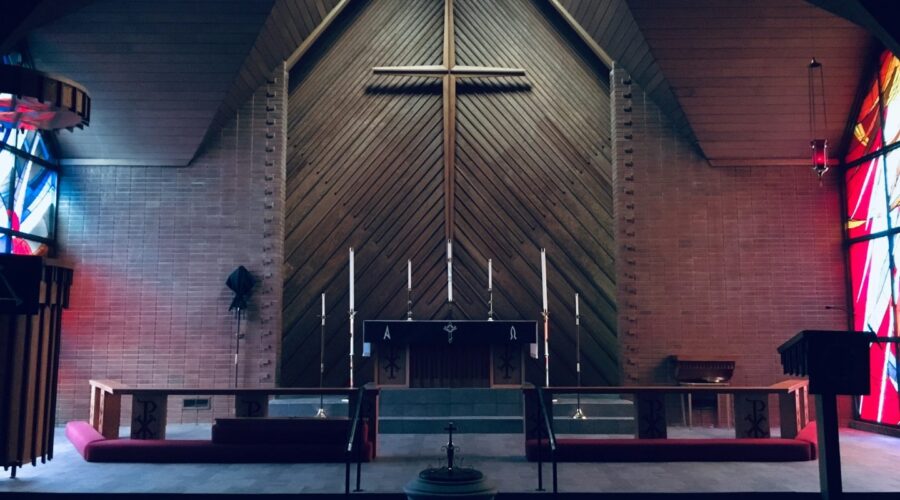
Discover the Enigmatic Saint John the Baptist: The Forerunner of Christ
Introduction
Saint John the Baptist, a significant figure in Christianity and other Abrahamic faiths, is known for his ascetic lifestyle, preaching of repentance, and role as the forerunner of Jesus Christ. His life and teachings have left an enduring impact on religious and spiritual traditions worldwide.
Birth and Early Life
Lineage and Birth
John the Baptist was born to Zechariah, a priest, and Elizabeth, his wife, who was considered barren. According to the Gospel of Luke, an angel appeared to Zechariah and foretold the birth of John, who would be filled with the Holy Spirit from his mother’s womb.
Austerity and Isolation
From a young age, John lived an ascetic life in the wilderness of Judea. He wore simple clothing made of camel’s hair, ate locusts and wild honey, and devoted himself to prayer and meditation.
Preaching and Baptizing
Repentance and Forgiveness
When John was about 30 years old, he began preaching in the wilderness. His message centered on repentance and forgiveness of sins. He urged people to confess their sins and undergo baptism as a symbol of cleansing and renewal.
Baptism of Jesus
According to the Gospels, John baptized Jesus in the Jordan River. Upon Jesus’ baptism, the heavens opened, and the Holy Spirit descended upon him in the form of a dove. John recognized Jesus as the Messiah and declared him “the Lamb of God who takes away the sins of the world.” (John 1:29)
Imprisonment and Death
Confrontation with Herod
John’s fearless preaching and criticism of Herod Antipas, the ruler of Galilee, led to his imprisonment. Herod had taken his brother’s wife, Herodias, as his own, which John condemned as sinful.
Beheading
While imprisoned, John continued to preach to the people. Herodias, seeking revenge, persuaded her daughter to request John’s head as a reward for her dance at Herod’s birthday celebration. Herod, bound by his oath, reluctantly agreed, and John was beheaded.
Significance and Legacy
Forerunner of Christ
John the Baptist was considered the forerunner of Jesus Christ. He prepared the way for Jesus’ ministry by calling people to repentance and pointing them towards the coming Messiah.
Symbol of Humility and Obedience
John’s simple lifestyle and obedience to God’s will serve as a model of humility and unwavering faith. Despite his popularity and influence, John always remained a humble servant of God.
Patron Saint of Various Groups
Saint John the Baptist is the patron saint of many groups, including priests, prisoners, and those who suffer from seizures.
Historical and Cultural Impact
Biblical and Qur’anic Accounts
The story of John the Baptist is recounted in all four Gospels of the Christian New Testament. In the Qur’an, John is known as Yahya and is considered one of the great prophets of Islam.
Art and Literature
John the Baptist has been depicted in countless works of art, literature, and music throughout history. He is often portrayed as a solitary figure in the wilderness or as the one baptizing Jesus.
Conclusion
Saint John the Baptist, a pivotal figure in religious and spiritual traditions, lived a life of asceticism, preached repentance, and prepared the way for the coming of Jesus Christ. His impact on Christianity and other faiths continues to resonate today, inspiring countless individuals to seek a deeper connection with God.
Dates and Events in John the Baptist’s Life Event Date Birth 6 BC Beginning of Preaching c. 27 AD Baptism of Jesus c. 29 AD Imprisonment c. 30 AD Beheading c. 31 AD Additional Resources

Discover the Rich History and Architectural Splendor of St. Boniface Church
A Historical Landmark in the Heart of San Francisco’s Tenderloin District
St. Boniface Church, a magnificent Catholic edifice nestled in the vibrant Tenderloin District of San Francisco, stands as a testament to the city’s architectural heritage and religious legacy. Its towering spires and intricate facade have captivated visitors and locals alike since its inception in 1863.
Architectural Marvel
Designed by renowned architect William H. George, St. Boniface Church showcases a blend of Gothic Revival and Romanesque styles. Its imposing exterior is adorned with intricate carvings, arched windows, and a massive rose window that illuminates the interior with ethereal light.
*
Gothic Spires: Two soaring spires, reaching a height of 160 feet, dominate the church’s skyline, adding to its dramatic presence.
*
Arched Windows: The sanctuary boasts a series of vaulted arched windows, allowing natural light to flood the interior, creating a sense of awe and reverence.
*
Rose Window: The focal point of the facade is the stunning rose window, composed of vibrant stained glass that depicts scenes from the life of Christ.
A Sanctuary of Faith
Inside St. Boniface Church, visitors are greeted by a grand and awe-inspiring sanctuary, where the magnificence of its architectural details unfolds.
*
Nave and Altar: The central nave, lined with stately columns, leads to the imposing main altar, adorned with intricate gold leaf and marble.
*
Carvings and Murals: The walls and ceilings are adorned with exquisite carvings and vibrant murals that depict biblical scenes and the saints.
*
Stained Glass Windows: The church is illuminated by an array of stained glass windows, casting colorful hues upon the interior, adding to its ethereal ambiance.
A Century of Witness
St. Boniface Church has played a pivotal role in the spiritual and cultural landscape of San Francisco for over a century.
*
Founded in 1863: Established to serve the growing German Catholic community, St. Boniface quickly became a hub for the city’s Catholic population.
*
Survived the Fire: Despite being heavily damaged in the devastating 1906 earthquake and fire, the church was meticulously restored and reopened in 1911.
*
Sanctuary for Immigrants: Throughout its history, St. Boniface has served as a sanctuary and haven for immigrants and marginalized communities.
A Vibrant Parish
St. Boniface Church is not only an architectural and historical marvel but also a vibrant and active parish.
*
Multicultural Masses: The church offers masses in multiple languages, including English, Spanish, and Tagalog, reflecting the diversity of its congregation.
*
Social Outreach: The parish is actively involved in outreach programs, providing assistance to the homeless, the sick, and those in need.
*
Community Events: St. Boniface hosts a variety of community events, including concerts, lectures, and festivals.
Visitor Information
*
Visiting Hours: The church is open daily from 8 am to 5 pm for visitors and tourists.
*
Guided Tours: Free guided tours are available by appointment, offering a comprehensive exploration of the church’s history and architecture.
*
Location and Accessibility: St. Boniface Church is conveniently located at the corner of Golden Gate Avenue and Jones Street. It is accessible by public transportation, including the BART and Muni lines.
Table of Key Architectural Features:
| Feature | Description |
|—|—|
| Gothic Spires | Soaring spires reaching 160 feet in height |
| Arched Windows | Vaulted arched windows allow natural light to flood the interior |
| Rose Window | Stunning stained glass window depicting scenes from the life of Christ |
| Nave and Altar | Central nave leading to the imposing main altar |
| Carvings and Murals | Exquisite carvings and vibrant murals depict biblical scenes and the saints |
| Stained Glass Windows | An array of stained glass windows cast colorful hues upon the interior |Tips for Visiting:
* Allow ample time to appreciate the architectural details and explore the sanctuary.
* Check the church’s website for information on guided tours and special events.
* Respect the sanctity of the church during your visit.
* Consider making a donation to support the preservation of this historical landmark.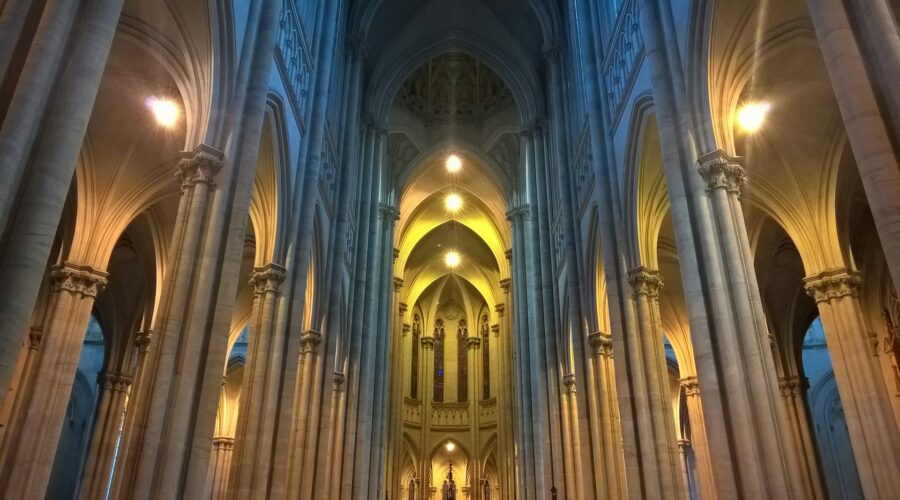
Unveiling Pentecostal Christianity: A Comprehensive Exploration of Beliefs and Practices
Origins and History of Pentecostalism
Pentecostal Christianity emerged in the early 20th century as a revival movement within Christianity. Its roots can be traced back to the Azusa Street Revival in Los Angeles in 1906, where participants experienced extraordinary spiritual phenomena such as speaking in tongues, divine healing, and prophecy.
The movement rapidly spread throughout the United States and beyond, establishing Pentecostal churches and denominations worldwide.
Core Beliefs of Pentecostalism
Holy Spirit Baptism
Pentecostals believe that all Christians can receive the baptism of the Holy Spirit, an empowering experience that enables them to speak in tongues, operate in supernatural gifts, and live a Spirit-led life.
Initial Physical Evidence
For Pentecostal Christians, the baptism of the Holy Spirit is often accompanied by an initial physical manifestation, typically speaking in tongues. This phenomenon is seen as a sign of the Spirit’s presence and power.
Practices and Worship
Praise and Worship
Pentecostal worship is characterized by enthusiastic praise and worship, often involving clapping, dancing, and singing. The focus is on connecting with God and expressing gratitude for His presence and blessings.
Spirit-Led Ministry
Pentecostals value Spirit-led ministry, where the Holy Spirit guides the messages and actions of ministers and worshipers during services.
Healing and Miracles
Many Pentecostal churches emphasize healing and miracles as evidence of God’s power. They believe that God heals people both physically and spiritually through the power of prayer and faith.
Denominational Diversity
Assemblies of God
A large Pentecostal denomination with a focus on evangelism and missions, known for its vibrant worship and emphasis on spiritual gifts.
Church of God in Christ
A predominantly African-American Pentecostal denomination that emphasizes social justice and community involvement, while maintaining a strong focus on the Holy Spirit.
United Pentecostal Church International
A conservative Pentecostal denomination that adheres strictly to the belief in the initial physical evidence of the baptism of the Holy Spirit, with a strong missionary outreach.
Impact and Significance
Global Expansion
Pentecostalism has become one of the fastest-growing Christian movements worldwide, with an estimated 600 million adherents globally.
Cultural Influence
Pentecostal Christianity has had a significant impact on popular culture, influencing music, art, and literature. It has also contributed to the rise of charismatic and evangelical movements in other denominations.
Social Activism
While not all Pentecostal churches are involved in social activism, some denominations, such as the Church of God in Christ, have played a prominent role in advocating for civil rights and social justice.
Conclusion
Pentecostal Christianity is a vibrant and diverse movement within Christianity that emphasizes the empowering presence of the Holy Spirit, supernatural gifts, and a Spirit-led approach to worship and ministry. Its core beliefs and practices have resonated with millions around the world, contributing to its global expansion and significant impact on society and culture.